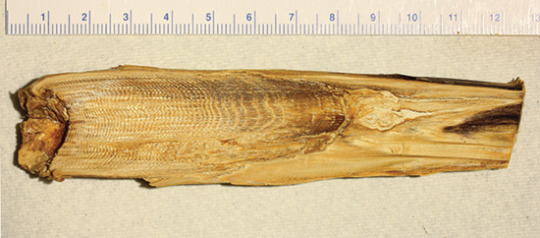#earwax

The most reliable way to determine the age of a Blue Whale (and other baleen whales to be precise) is by close examination of their earwax. Throughout their lives they form long plugs of earwax of alternating layers of light and dark shades. The changes in colour are caused by the whales dietary pattern of fasting and feasting and each set is produced over one year, therefore, counting the layers gives an indication of the whale’s age. On average, blue whales live between 80 and 90 years.
Scientists have also studied levels of cortisol, the hormone released in times of stress, found in whales’ earwax to determine the impact of human behaviour on the whales. These studies showed that in the 1920s and 30s, when whale hunting was at it’s peak, more cortisol was found in the whales’ earwax, suggesting that the whales had a profound emotional reaction to the hunting. The ear plugs can also be used to determine the pollutants the whales have been exposed to.
Also interesting is the size of a Blue Whale’s heart.
Photo is from the Smithsonian.
